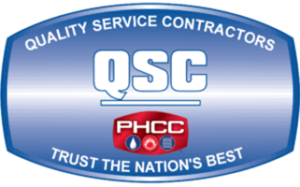Water Heater Maintenance becomes especially important as the flowers bloom and the temperatures rise in Silver Spring, MD it’s the perfect time to focus on spring cleaning and home maintenance. Among the most crucial tasks is ensuring your water heater is in top shape. Proper water heater maintenance not only enhances its efficiency and longevity but also prevents unexpected breakdowns. As residents in areas like North Potomac, MD, start to shed their winter coats, it’s essential to prepare your home’s systems for the warmer months ahead.
Water heater maintenance is a key aspect of preparing for spring. It ensures that your system runs smoothly, providing reliable hot water for all your needs. From showers to cleaning, an efficient water heater makes daily life comfortable and convenient. By maintaining your water heater, you’re also optimizing its performance, which can lead to energy savings and reduced utility bills.
However, many homeowners overlook the importance of regular water heater checks. This oversight can lead to inefficiencies and potential failures, especially after the long winter months. As we step into spring, it’s a wise decision to inspect your water heater for any signs of wear or damage. Addressing these issues early can prevent more significant problems down the line.
In conclusion, engaging in regular water heater maintenance is a smart move for any homeowner in the Silver Spring area. By taking proactive steps now, you can ensure that your water heater operates efficiently throughout the spring and beyond. This not only contributes to a more comfortable home but also supports the overall health of your household systems.
Understanding Your Water Heater’s Needs
Understanding your water heater’s needs begins with recognizing the various types that are commonly used in homes. Whether you have a traditional tank-based system or a tankless model, each requires specific water heater maintenance to function effectively. In Silver Spring, MD, where seasonal shifts can influence water temperature and quality, it’s crucial to know your system’s requirements. This knowledge ensures that your maintenance efforts are both appropriate and effective.
The first step in effective water heater maintenance is to check the anode rod, which protects the tank from rust. Typically, this component should be checked annually and replaced if more than half is corroded. Additionally, sediment build-up can be a significant issue, especially in areas like North Potomac, MD, where water might have higher mineral content. Flushing the tank yearly helps remove these sediments, enhancing the heater’s efficiency and lifespan.
Another vital aspect of water heater maintenance is inspecting the pressure relief valve. This safety device keeps pressure from building up excessively in the tank, which could lead to dangerous situations. Testing this valve by lifting the lever and watching for water flow into the discharge pipe is an easy check. If no water flows, or if it leaks around the valve, it’s time for a replacement to ensure your system remains safe.
Finally, setting the temperature correctly contributes significantly to the efficiency and safety of your water heater. A setting of 120 degrees Fahrenheit is generally recommended to prevent scalding and reduce energy usage. Regularly monitoring and adjusting the thermostat can prevent overheating and reduce wear on your system, keeping it running smoothly for years. By maintaining these aspects of your water heater, you ensure it meets the needs of your household while avoiding unnecessary energy costs.

Water Heater Maintenance: Spring Inspection Checklist
As the spring season unfolds in Silver Spring, MD, it’s the ideal time to conduct a thorough inspection of your water heater. A comprehensive spring inspection checklist can help you identify potential issues before they escalate into costly repairs. This proactive approach to water heater maintenance ensures that your system remains efficient and reliable during the warmer months. With a few simple checks, you can extend the life of your water heater and maintain its optimal performance.
Start your inspection by examining the exterior of the water heater for any signs of leaks or corrosion. These can be indicators of minor problems that could develop into major issues if not addressed promptly. It’s important to catch these early to prevent water damage and maintain the integrity of the water heater’s structure. Additionally, verify that the area around your water heater is clear of any flammable materials, as this is crucial for safety and accessibility.
Next, inspect the heating elements and thermostats. In areas like North Potomac, MD, mineral deposits from hard water can accumulate on these components, reducing their efficiency. If you notice substantial buildup or any malfunctioning parts, consider consulting a professional for cleaning or replacement. This step is vital for ensuring that your water heater operates at its best, providing consistent and reliable hot water for your household needs.
Finally, check the insulation around your water heater and pipes. Proper insulation helps in maintaining the water temperature, reducing the energy required to heat the water and thereby lowering your utility bills. Make sure the insulation is intact and free from any damage. This not only enhances efficiency but also contributes to the overall effectiveness of your water heater maintenance routine. By following this spring inspection checklist, you can enjoy peace of mind knowing that your water heater is prepared for the season ahead.
How to Drain and Flush Your Water Heater
Draining and flushing your water heater is a crucial part of water heater maintenance, especially after the winter season in Silver Spring, MD. Over time, sediment and minerals can accumulate in the bottom of your tank, impacting the efficiency and lifespan of your unit. Draining the tank helps to remove these deposits, ensuring your water heater operates smoothly. This process is recommended annually to prevent the buildup that can cause overheating and damage.
Before you start the draining process, it’s essential to turn off the power to the water heater. For gas water heaters, turn the gas switch to ‘pilot’ to ensure the burners do not ignite while you’re working. For electric heaters, switch off the circuit breaker. This safety step prevents any accidents and allows you to work on the water heater safely. Ensuring the unit is off will protect you from potential burns or electrical shocks.
Next, connect a garden hose to the drain valve located at the bottom of your water heater. Make sure the other end of the hose is in an area that can safely receive hot water, such as a basement drain or an outdoor area. This setup is crucial for directing the water away from your home and minimizing the risk of water damage. Residents of North Potomac, MD, should particularly ensure that the drainage area can handle the influx of water without causing erosion or flooding.
Finally, open the drain valve and allow the water to flow out until it runs clear. This step might take some time, depending on the amount of sediment. After the water clears, flush the tank by turning on the cold water supply to the water heater. This action will help remove any remaining sediment. Once the water runs clear again, close the drain valve, disconnect the hose, and restore power to the unit. Your water heater is now ready to provide efficient service throughout the spring and beyond, keeping your water heater maintenance up to date and effective.
Checking and Replacing the Anode Rod
Checking and replacing the anode rod is a crucial part of water heater maintenance, particularly as you prepare for the spring season in Silver Spring, MD. The anode rod is essential for preventing rust in your water heater’s tank, acting as a sacrificial rod that corrodes in place of the tank’s material. Over time, the anode rod degrades and must be replaced to continue protecting the tank effectively. Regular checks can extend the lifespan of your water heater and ensure it remains functional and efficient.
For homeowners in North Potomac, MD, where water may have higher mineral content, the anode rod may deteriorate more quickly. It’s advisable to inspect the anode rod annually, especially before the spring when water usage typically increases. If more than half of the rod has corroded, or if it’s coated with a thick layer of calcium, it’s time for a replacement. This simple step can prevent more costly repairs or replacements of the entire water heater in the future.
The process of checking the anode rod involves a few steps but is manageable for many homeowners. First, power to the water heater should be turned off to ensure safety during the inspection. The rod is usually located at the top of the tank and can be accessed by unscrewing the hex head bolt. If you’re unsure or uncomfortable with this process, it’s wise to call a professional plumber to handle the inspection and replacement.
Replacing the anode rod not only contributes to the longevity of your water heater but also enhances its efficiency. A new rod can more effectively attract corrosive elements, which is crucial for maintaining the interior condition of the tank. By keeping up with this aspect of water heater maintenance, you ensure that your system is prepared to provide reliable service throughout the spring and beyond. This proactive approach is key to enjoying uninterrupted hot water in your home.
Adjusting Temperature Settings for Spring and Summer
As the seasons transition from spring to summer in Silver Spring, MD, adjusting the temperature settings on your water heater becomes an essential part of water heater maintenance. This adjustment not only ensures comfort but also enhances energy efficiency. As temperatures rise, the need for excessively hot water diminishes, which presents an opportunity to lower the water heater settings accordingly. This simple tweak can lead to significant savings on energy bills, making it a cost-effective strategy for homeowners.
It’s advisable to set your water heater temperature to 120 degrees Fahrenheit during the warmer months. This temperature is generally considered safe and adequate for most household needs, preventing the risk of scalding while providing sufficient hot water for daily activities. By maintaining this optimal temperature, you also reduce the strain on your water heater, which can prolong its lifespan. Residents of North Potomac, MD, will find that this setting helps manage energy consumption effectively, especially during periods of increased water usage.
Regular monitoring and adjusting of your water heater’s thermostat is a critical aspect of water heater maintenance. It ensures that the system operates within safe parameters and prevents overheating, which can be particularly damaging. A bi-annual check of the thermostat settings is recommended as part of a routine maintenance schedule. This ensures that the settings remain at the desired temperature, providing consistent performance throughout the season.
In conclusion, proper adjustment of your water heater’s temperature settings is a straightforward yet impactful part of maintaining your system’s efficiency and safety. As you enjoy the warmer weather in Silver Spring, MD, take the time to ensure your water heater is set optimally. This not only contributes to energy savings but also ensures that your system is prepared to meet your household’s hot water needs efficiently and reliably. By incorporating these adjustments into your regular water heater maintenance routine, you can enjoy a comfortable and cost-effective home environment all season long.
Inspecting Water Heater Connections and Pipes
Inspecting the connections and pipes of your water heater is a vital component of comprehensive water heater maintenance. This step is crucial for ensuring that there are no leaks or weaknesses that could lead to bigger issues down the line. In Silver Spring, MD, where the change from cold to warmer weather can affect plumbing integrity, this inspection is even more critical. It’s advisable to visually check all visible pipes and connections for signs of corrosion or leakage.
During this inspection, pay special attention to the fittings and joints. These areas are common sites for leaks and can often be the first sign of potential problems. If you notice any water or moisture, it could indicate that a seal is failing or a connection needs tightening. Addressing these issues promptly can prevent water damage and maintain the efficiency of your water heater. Residents of North Potomac, MD, should be particularly vigilant, as local water properties might accelerate wear on plumbing components.
Another important aspect is to check for any signs of strain or stress on the water heater pipes. Look for bends or kinks in flexible lines that could impede water flow or lead to cracks. Ensuring that pipes are properly supported and free from unnecessary tension helps in maintaining a safe and functional water heater system. This preventive measure is an integral part of water heater maintenance, safeguarding against unexpected malfunctions.
Lastly, it’s wise to monitor the condition of the insulation on hot water pipes. Proper insulation helps in maintaining water temperature, which enhances energy efficiency by reducing heat loss. Check that the insulation is intact and covers all accessible hot water pipes. This not only contributes to energy savings but also ensures that your water heater operates optimally. By keeping these components in check, you enhance the overall effectiveness of your water heater maintenance routine, ensuring a reliable supply of hot water in your home.
The Importance of Professional Water Heater Inspections
While many aspects of water heater maintenance can be handled by homeowners, the importance of professional inspections cannot be overstated. Professionals bring a depth of knowledge and experience that ensures every component of your water heater in Silver Spring, MD, is functioning optimally. They can identify issues that might not be obvious to the untrained eye, such as subtle signs of wear or impending failures. This expertise is crucial in preventing minor issues from escalating into costly repairs.
During a professional inspection, a certified technician will perform a comprehensive assessment of your water heater. This includes checking the system’s pressure levels, testing safety valves, and examining the integrity of the tank and its internal components. In areas like North Potomac, MD, where water quality may vary, a professional can also assess the impact of mineral deposits on your system. Their findings can guide you on necessary adjustments or replacements that enhance the system’s efficiency and safety.
Another key benefit of professional water heater maintenance is the technician’s ability to fine-tune your system to its unique environmental and usage demands. They can adjust settings that optimize performance without compromising safety or efficiency. This tailored approach not only extends the lifespan of your water heater but also ensures it operates at peak efficiency, potentially lowering your energy costs over time.
In conclusion, investing in professional water heater inspections is a wise choice for any homeowner. It complements your regular maintenance routine, providing peace of mind that your water heater is in excellent condition. These inspections are integral to maintaining the reliability and efficiency of your water heater, ensuring it provides consistent, safe hot water for your household. By prioritizing professional oversight, you safeguard your home against unexpected disruptions and enjoy the benefits of a well-maintained water heater.
Energy Saving Tips for Water Heater Use in Warmer Months
As the weather warms up in Silver Spring, MD, and North Potomac, MD, optimizing your water heater settings can lead to significant energy savings. During the warmer months, the demand for hot water decreases, presenting an opportunity to adjust your water heater’s temperature. Lowering the thermostat to around 120 degrees Fahrenheit is generally sufficient for daily needs and prevents the system from overworking. This adjustment is a simple yet effective part of water heater maintenance that can reduce your energy bills and extend the life of your unit.
Another energy-saving tip is to use timers on your water heater. Timers allow you to turn off the unit during hours when hot water is not needed, such as overnight or when the house is empty. This strategy prevents energy waste by heating water only when necessary. By incorporating a timer into your water heater maintenance routine, you can optimize energy use without sacrificing comfort, ensuring that hot water is available when you need it while saving on costs.
Insulating your water heater and its associated piping is also crucial for energy conservation. Proper insulation reduces heat loss as water travels from the heater to your faucets, maintaining the water’s temperature more efficiently. This means your system doesn’t have to work as hard to reheat the water, which saves on energy consumption. Checking and upgrading insulation should be part of your regular water heater maintenance to ensure optimal performance.
Lastly, consider the benefits of upgrading to a more energy-efficient model if your current water heater is aging. Newer models are designed to be more efficient and include features like better insulation and advanced heating technologies. While the upfront cost may be higher, the long-term savings on energy bills can be substantial. Regular water heater maintenance and timely upgrades are key strategies for residents in Silver Spring, MD, and North Potomac, MD, aiming to reduce their energy usage and enhance the efficiency of their home heating systems.

Frequently Asked Questions
What is water heater maintenance?
Water heater maintenance involves inspecting and servicing your unit to ensure it operates efficiently and safely. This process typically includes checking the pressure relief valve, flushing the tank to remove sediment buildup, and examining the anode rod to prevent corrosion. Regular maintenance can significantly extend the lifespan of your water heater and help avoid costly repairs. For homeowners in Silver Spring, spring is an ideal time to perform these checks to prepare for the year ahead.
How often should water heater maintenance be performed?
Water heater maintenance should be performed at least once a year to ensure optimal performance and safety. This annual schedule helps prevent the buildup of sediment, which can reduce your water heater’s efficiency and lifespan. For areas with hard water, such as Silver Spring, it might be beneficial to perform water heater maintenance more frequently. Adhering to a regular maintenance routine not only enhances efficiency but also helps in identifying potential issues before they become major problems.
What are common issues to look for during water heater maintenance?
During water heater maintenance, it’s crucial to look for several common issues that can affect the unit’s performance. Key indicators include water leaks around the tank or fittings, which suggest seal or pressure problems. Another concern is unusual noises like rumbling or banging, typically caused by sediment buildup inside the tank. Additionally, inspect the color and odor of the water; any rustiness or foul smell might indicate corrosion or bacterial growth inside the tank. Addressing these issues promptly during routine water heater maintenance can prevent more severe problems and ensure efficient operation.
How can I improve the efficiency of my water heater in Silver Spring?
To enhance the efficiency of your water heater in Silver Spring, start by scheduling regular water heater maintenance. This includes flushing the tank to eliminate sediment buildup, which improves heat transfer and efficiency. Additionally, insulating the water heater and associated pipes can reduce heat loss, conserving energy and lowering utility bills. Finally, setting the thermostat to an optimal 120 degrees Fahrenheit ensures sufficient hot water without excessive heating, further boosting energy efficiency and safety.
What tools are needed for basic water heater maintenance?
For basic water heater maintenance, a few essential tools are required to ensure the job is done effectively. A standard wrench or a set of adjustable wrenches is crucial for tightening or loosening connections. A screwdriver is also necessary for accessing the heater’s panels and adjusting settings. Additionally, a garden hose is used to flush the tank, which is a key part of water heater maintenance to remove sediment. Having these tools ready can make water heater maintenance smoother and more efficient, helping to extend the unit’s lifespan.









